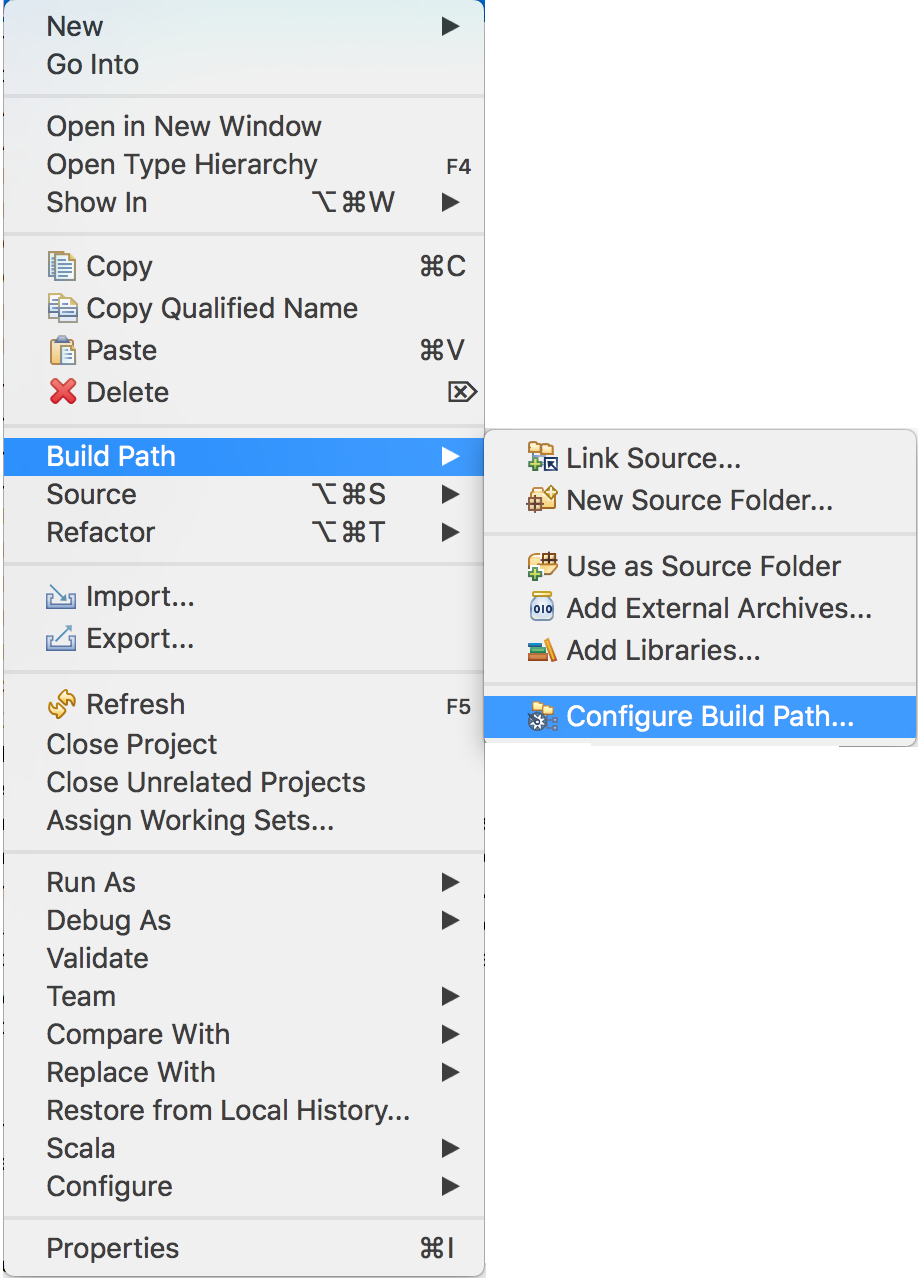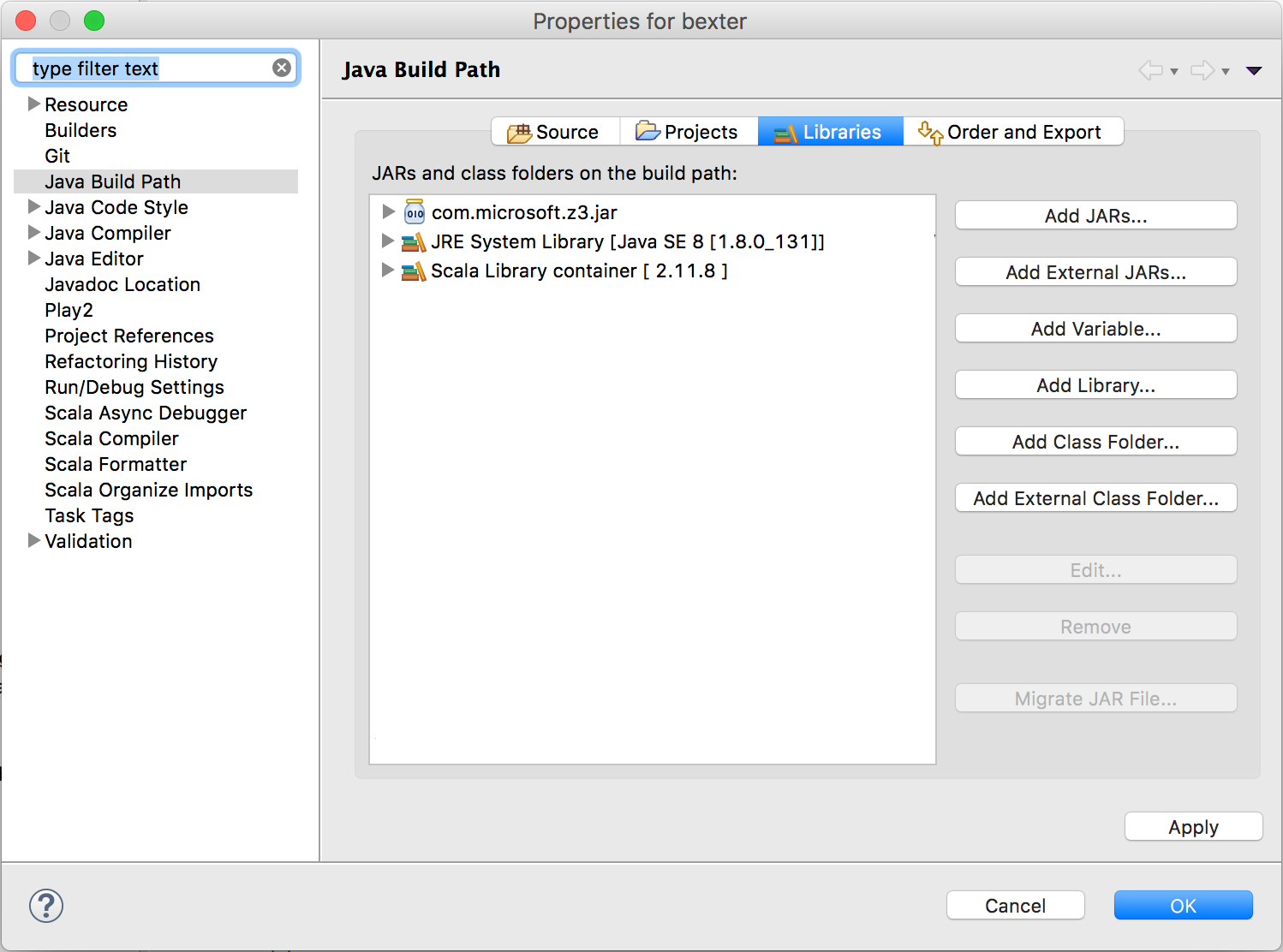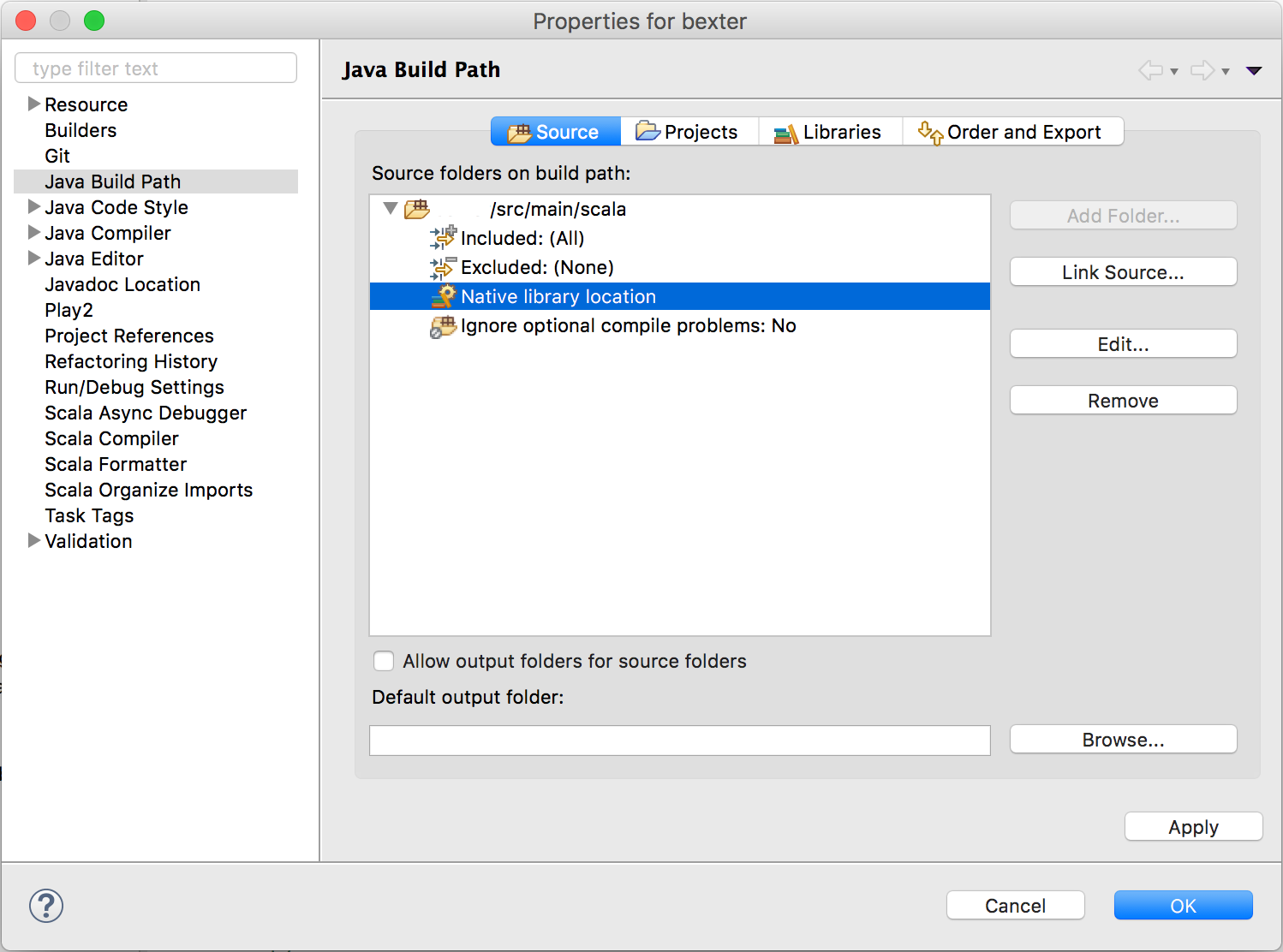Introduction
In this post, I will show how to use the z3 Java library with Scala in Eclipse to solve a SAT formula.
I made this post because even if it is quite short, I did lot of investigations on it to succeed to use z3 Java library with Scala in Eclipse IDE.
Requirements
- Eclipse for Scala, you can download it here
- Python installed
Getting Z3 jar file
- Clone the Z3 git repository or download it
- Go in the z3 folder and run the command
python scripts/mk_make.py --java - Inside the z3 folder, go into the folder
buildand thenmake examples- Note: If you encounter an error during the
makedue to an invalid argument-std=c++11, edit the fileconfig.mkand remove the argument-std=c++11from theCXXFLAGSflag
- Note: If you encounter an error during the
- The jar file is now created in the folder
yourf3folder/buildand some Java examples
Note: For a full installation of z3 repository please follow these instructions.
Eclipse configuration
In Eclipse, right-click on your Scala project, click on Build Path and Configure Build Path:

It should open a window, once it's open go into the Libraries tab, click on Add External JARs... and select the z3 Jar file from the gitfolder/build (the file name would be com.microsoft.z3.jar):

Once you did that, you have to specify one last thing to Eclipse to make it works with z3. On the same window as the previous configuration, go on the Source tab click on your project to open the menu context, choose Native library location, click on the button Edit... on the right and choose the gitfolder/build folder :

You need to do that because the library uses two file into the gitfolder/build to work. (libz3.dylib and libz3java.dylib in Mac Os, libz3.dll and libz3java.dll in Windows)
Now you just have to import the library into your project file to use it.
Because Scala is made with Java, you can also use this part of the tutorial to use the z3 library into a Java project in Eclipse.
The below part of the tutorial was made for Scala but if you want to know how to do it in Java you can follow this link for Java examples.
How to use Z3 in Scala
There are two ways to use Z3 in Scala:
1. using a file SMT2 formatted with the formula you want to solve,
2. programming directly in code the formula.
In the following, I explain both ways by solving the propositional formula ((a | b) & c), as an example.
To solve a formula in z3 library, you need two things, the formula you want to solve in BoolExpr format and the variables from the formula you want to know the result format.
1. Using external SMT2-formatted files
Consider the following SMT2 formatted text file, named sample.smt2, which express the above propositional formula, i.e., (a|b) & c):
(declare-const a Bool)
(declare-const b Bool)
(declare-const c Bool)
(assert (and (or a b) c))
A Scala program code which read this smt2 file, and compute the formula is as follows:
import com.microsoft.z3._
object z3test
{
def main(args: Array[String])
{
val ctx: Context = new Context(new java.util.HashMap[String, String])
val formula: BoolExpr = ctx.parseSMTLIB2File("sample.smt2", null, null, null, null)
val args: Array[Expr] = formula.getArgs // Here I will get 2 args
val arg1: Expr = args(0)
val arg2: Expr = args(1)
val a: Expr = formula.getArgs()(0).getArgs()(0)
val b: Expr = formula.getArgs()(0).getArgs()(1)
val c: Expr = formula.getArgs()(1)
/* Evaluation part */
val solver: com.microsoft.z3.Solver = ctx.mkSolver() // Get a solver from the Context object
solver.add(formula) // Add the formula to the solver (BoolExpr)
if(solver.check == Status.SATISFIABLE) // Check if the formula is satisfiable or not
{
val model: Model = solver.getModel // Get a model from the solver
val resultVa: Expr = model.eval(a,false) // Get the result for each variables
val resultVb: Expr = model.eval(b,false)
val resultVc: Expr = model.eval(c,false)
println(resultVa) // Result is true
println(resultVb) // Result is false
println(resultVc) // Result is true
}
}
}
The program code first initializes a Context object with a HashMap[String, String] :
val ctx: Context = new Context(new java.util.HashMap[String, String])
So you can parse the file by calling this method on the Context object previously created :
val formula: BoolExpr = ctx.parseSMTLIB2File("smt2file.txt", null, null, null, null)
After you did that you get my BoolExpr variable which contains the formula, you can access to the formula by this way :
val args: Array[Expr] = formula.getArgs // Here I will get 2 args
val arg1: Expr = args(0)
val arg2: Expr = args(1)
println(arg1)
println(arg2)
// Result
(or a b)
c
With my formula, I will use this code to get my variables :
val a: Expr = formula.getArgs()(0).getArgs()(0)
val b: Expr = formula.getArgs()(0).getArgs()(1)
val c: Expr = formula.getArgs()(1)
There is a better way to achieve that :
The formula is divide part by part and you can access it by using the method getArgs(). This method will return you an Array[Expr]. You can call it again on the Expr you got from the array. Until there is a single element in the Expr the size of the array return by getArgs() will be greater than 0. I.E. : if you want to get all the variables of the formula, you can achieve this using a method like that :
def getAllVariable(a: Array[Expr]): List[Expr] =
{
if (a == null || a.size == 0)
Nil
else if (a.head.getNumArgs == 0)
a.head :: getAllVariable(a.tail)
else
getAllVariable(a.head.getArgs) ::: getAllVariable(a.tail)
}
2. Programming the formula
Here is the Scala code of the second approach:
import com.microsoft.z3._
object z3test
{
def main(args: Array[String])
{
val ctx: Context = new Context(new java.util.HashMap[String, String])
val a: BoolExpr = ctx.mkBoolConst("a")
val b: BoolExpr = ctx.mkBoolConst("b")
val c: BoolExpr = ctx.mkBoolConst("c")
val formula: BoolExpr = ctx.mkAnd(ctx.mkOr(a,b),c)
/* Evaluation part */
val solver: com.microsoft.z3.Solver = ctx.mkSolver() // Get a solver from the Context object
solver.add(formula) // Add the formula to the solver (BoolExpr)
if(solver.check == Status.SATISFIABLE) // Check if the formula is satisfiable or not
{
val model: Model = solver.getModel // Get a model from the solver
val resultVa: Expr = model.eval(a,false) // Get the result for each variables
val resultVb: Expr = model.eval(b,false)
val resultVc: Expr = model.eval(c,false)
println(resultVa) // Result is true
println(resultVb) // Result is false
println(resultVc) // Result is true
}
}
}
As you can see the code, the programming-the-formula ways share many things in common with the first approach, however, there are some differences. In the previous part, you get the formula first, in this part it will be the contrary: you get the variables first and the formula second.
The program code first initializes a Context object with a HashMap[String, String] :
val ctx: Context = new Context(new java.util.HashMap[String, String])
To create variables, you have to call the method mkBoolConst() on the Context object, like that :
val a: BoolExpr = ctx.mkBoolConst("a")
val b: BoolExpr = ctx.mkBoolConst("b")
val c: BoolExpr = ctx.mkBoolConst("c")
To program the formula, you need to use the variables and the boolean methods provide by the Context object:
val formula: BoolExpr = ctx.mkAnd(ctx.mkOr(a,b),c)
Notice that there is a lot of boolean methods provides by the Context object like ctx.mkImplies() or ctx.mkNot().
Sources
Z3 Github
Eclipse for Scala, Scala IDE